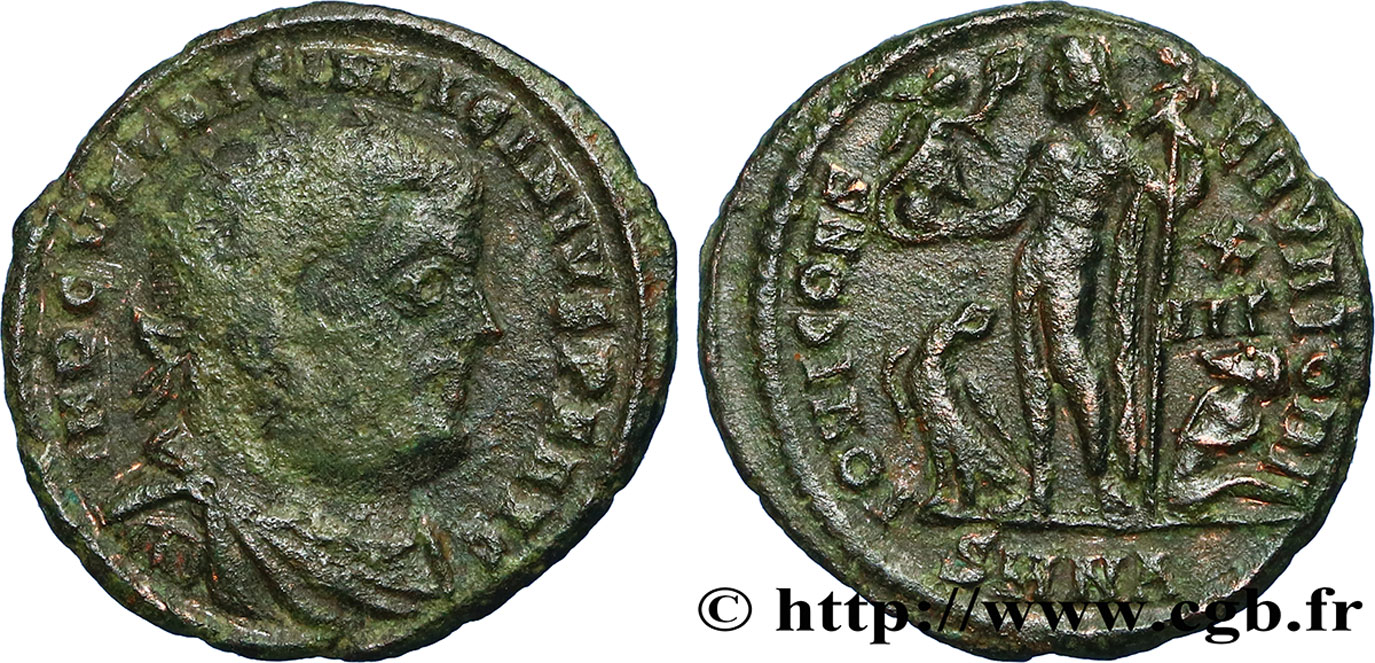E-auction 169-104520 - brm_182585 - LICINIUS I Follis ou nummus
You must signin and be an approved bidder to bid, LOGIN TO BID. Accounts are subject to approval and the approval process takes place within 48 hours. Do not wait until the day a sale closes to register. Clicking on « bid » constitutes acceptance of the terms of use of cgb.fr private e-auctions.
Bids must be placed in whole Euro amounts only. The sale will start closing at the time stated on the item description; any bids received at the site after the closing time will not be executed. Transmission times may vary and bids could be rejected if you wait until the last second. For further information ckeck the E-auctions F.A.Q.
NO BUYER'S FEE.
NO BUYER'S FEE.
| Estimate : | 20 € |
| Price : | 7 € |
| Maximum bid : | 7 € |
| End of the sale : | 11 July 2016 14:28:30 |
| bidders : | 4 bidders |
Type : Follis ou nummus
Date: 321-324
Mint name / Town : Nicomedia
Metal : copper
Diameter : 18,5 mm
Orientation dies : 12 h.
Weight : 2,77 g.
Rarity : R1
Officine: 1re
Coments on the condition:
Usure importante mais exemplaire parfaitement lisible et identifiable. Joli revers. Patine vert foncé
Catalogue references :
Obverse
Obverse legend : IMP C VAL LICIN LICINIVS P F AVG.
Obverse description : Buste radié, drapé et cuirassé de Licinius Ier à droite, vu de trois quarts en avant (A).
Obverse translation : "Imperator Cæsar Valerius Licinianus Licinius Pius Felix Augustus", (L’empereur césar Valerius Licinianus Licinius pieux heureux auguste).
Reverse
Reverse legend : IOVI CONS-ERVATORI/ -|X/IIM// SMNA.
Reverse description : Jupiter nu, debout à gauche, le manteau sur l’épaule gauche, tenant un globe nicéphore de la main droite et un sceptre surmonté d’un aigle de la main gauche ; à ses pieds, à gauche, un aigle debout à gauche, tournant la tête à droite, tenant une couronne dans son bec et à droite, un captif assis à droite, tournant la tête à gauche, les mains liées dans le dos.
Reverse translation : “Iovi Conservatori”, (À Jupiter le protecteur).
Commentary
Poids léger. Rubans de type 3 aux extrémités bouletées. Ptéryges invisibles sous le paludamentum.








 Report a mistake
Report a mistake Print the page
Print the page Share my selection
Share my selection Ask a question
Ask a question Consign / sell
Consign / sell
 Full data
Full data









